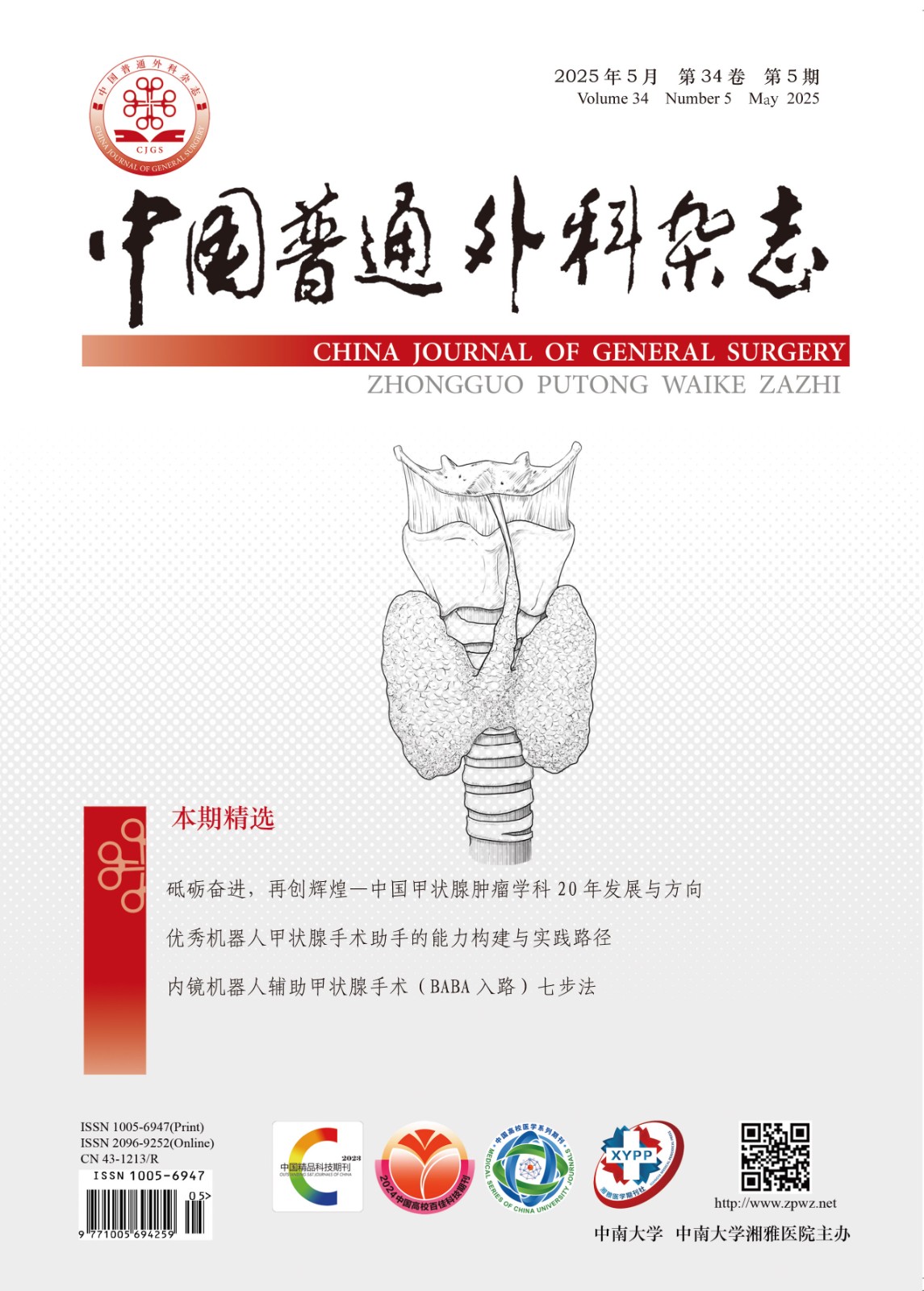Abstract:Objective: To investigate short- and long-term efficacy of surgical treatment for Stanford type A acute aortic dissection (AAD) in elderly patients.
Methods: The clinical data of 196 patients with Stanford type A AAD undergoing surgical treatment in the Department of Cardiovascular Surgery of the Second Affiliated Hospital of Zhengzhou University from June
2013 to September 2016 were retrospectively analyzed. All patients underwent surgical repair under general anesthesia with deep hypothermic circulatory arrest and unilateral selective cerebral perfusion. The patients consisted of 33 cases with age equal to or over 60 years (elderly group) and 163 cases with age below 60 years (nonelderly group). The clinical variable and outcomes of the two groups of patients were compared.
Results: In elderly group compared with nonelderly group, the proportion of male cases was lower (45.5% vs.
73.0%, P=0.000), the proportion of DeBakey type II dissection was increased (21.2% vs. 6.7%, P=0.009); the proportion of cases undergoing ascending aortic replacement plus total aortic arch replacement with stent elephant trunk implantation was decreased (9.1% vs. 28.2%, P=0.021), but the proportion of cases undergoing a simple ascending aortic replacement was increased (21.2% vs. 2.5%, P=0.000); the average extracorporeal circulation time, aorta occlusion time and operative time were all shortened (215.70 min vs. 252.98 min, P=0.000; 121.12 min vs. 134.00 min, P=0.008; 489.15 min vs. 533.52 min, P=0.004); the length of the postoperative ICU stay was prolonged (235.27 h vs. 163.55 h, P=0.011), and the incidence of postoperative renal dysfunction (21.2% vs. 6.7%, P=0.009) and infections (30.3% vs. 9.8%, P=0.002) were increased; the postoperative survival showed no significant difference (P=0.1466). Statistical analysis of the entire group of patients showed that extracorporeal circulation time was an independent risk factor for postoperative in-hospital death (OR=0.987, 95% CI=0.977 0.997, P=0.011), while the age (OR=1.790, 95% CI=0.651 4.921, P=0.259) and other factors were not significantly associated with the risk of postoperative in-hospital death.
Conclusion: For elderly AAD patients, surgical procedure selected according to the extent of the dissection involvement may offer a satisfactory result. Surgical efficacy can be improved by keeping the extracorporeal circulation time as short as possible.

